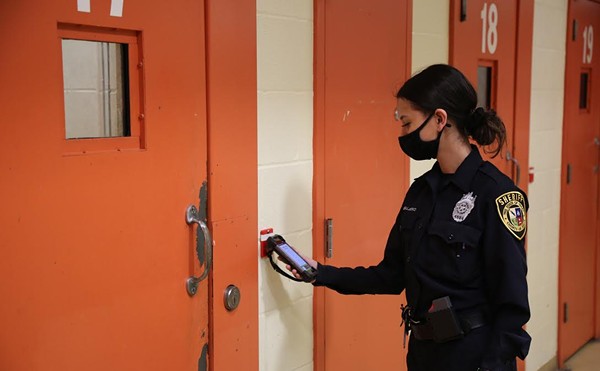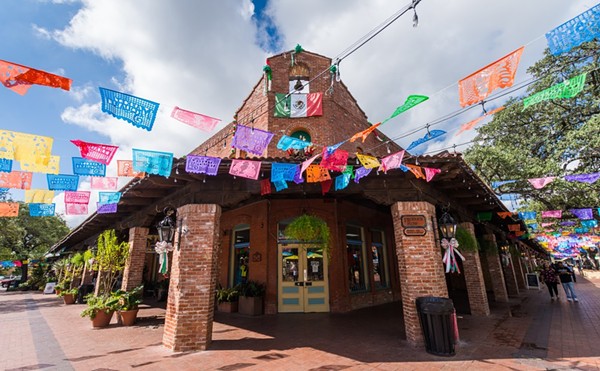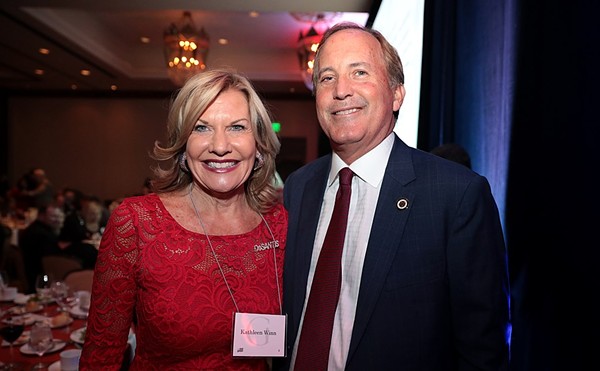When the city rolled out its sweeping smoking ban this summer, eager to make the Americans for Nonsmokers’ Rights list of smoke-free cities, the winners and losers were obvious. The winners: bars that already had sizable patios, cigar bars, and, many would argue, anyone with a set of lungs looking to imbibe clear of a carcinogenic cloud. Unaffected Alamo Heights’ bar and restaurant district sits ready to catch cigarette-puffing refugees aching for a drag while they sip their cocktails. And despite inclusion in early drafts of the ordinance, VFW posts, the River Walk, and the Shrine of Texas Liberty itself all escaped the ban. But if you’re an everyday pub, sports bar, or dive without a patio or enough space to build one: tough luck.
Judy Simpson, general manager at Finnegan’s on US 281 near Thousand Oaks, wagered her neighborhood pub has taken a 25-30 percent hit in sales. The future’s “looking a little better but not much,” Simpson said, as she and the landlord hash out plans for a patio.
Initially, Simpson considered building a properly cordoned smoking area with fencing, chairs, tables, and ashtrays on her front sidewalk. But complications arose from the presence of an ADA accessible ramp and the need for full visibility. Currently, the bar is separated from the front sidewalk by a vestibule with two sets of double doors. The lack of visibility invites patrons to walk off with drinks or, worse, pass them to minors. “What we’re trying to do is build a place you can smoke where you can take your drink and don’t feel like you’ve been ostracized from the rest of the bar,” she said. Simpson expects building to begin in December and complete sometime in January. She’s not worried about closing or laying anyone off. For now.
In puff-friendly Alamo Heights, the Broadway 5050 is catching the overflow, says General Manager and managing partner Danny Barborak. “People who have a cocktail often want a cigarette. … I’d say we’ve got some people stopping in here for a drink or two because it’s now a treat to smoke inside,” he said, estimating sales have risen a few percentage points since the San Antonio ban began.
Meanwhile, for Alibis on Commerce east of US 281 and two of the Blue Star bars, business has marched forward with nary a hiccup since each had patios before the smoke-ban rollout.
Scott Saulle, who slings spirits at both Joe Blue’s on South Alamo and Joey’s on North St. Mary’s, said the ban hasn’t so much reduced the crowds, just shuffled them around a bit. Patrons now tend to crowd Joeys’ cozy, two-floor patio (which features an outside bar on weekends) instead of the smokeless indoors. “On a Wednesday night, I might have three people sitting at the bar and 25 people sitting outside,” he said. “It’s really weird.”
Joe Blue’s and Alibis both sport wraparound patios. Business at the former is unchanged, Saulle said. And according to Joey’s head waitress Lisa Gonzales, diehard indoor smokers have simply been swapped by customers who would likely jet after one drink on account of smoke. Save for the crowd redistribution and the occasional intense debate on the ban, patron traffic is virtually unchanged.
Alibis General Manager Tracey Thurman said the same, though her clientele, who like a smoke while dancing or punching her touch-screen games, are mildly inconvenienced to step out. “We have a strong regular crowd,” she said. “Everything from bankers to bikers.”
Ron Herrera, co-owner of SoHo Martini & Wine Bar, says he’s lost a few dedicated cigar smokers, but on the whole the clientele has adjusted. They simply step outside to his tiny patio and light up. “Are we okay? Yeah,” he said. “I just don’t like being told how to run my own business.”
But the question remains: as a cigar bar, should Herrera’s patrons even have to step outside for a drag?
Herrera assumed SoHo was ban-exempt, falling under the umbrella term “retail tobacco store” in the city’s ordinance. On the Friday after the ban went into effect, Herrera said he got a call from the Mayor’s office, telling him he couldn’t keep his cigar-bar status if he continued to sell food, which apparently includes typical drink garnish like lemons, limes, and olives in cocktails (SoHo doesn’t carry the snacks found at some more traditional bars, like wings, fries, and pizza). Though Herrera found the logic a little baffling, he complied, saying the mayor’s rep threatened to sic a public health official on the bar if he didn’t. A city health employee still visited the following Monday to double down, he said.
Metro Health records show nobody’s filed a complaint against SoHo since the smoking ban went into effect, but here’s where the new ordinance gets slippery. The new piece of city code uses the term “bar” to describe a place a lot like SoHo, which is an “establishment that is devoted to the serving of alcoholic beverages for consumption by guests.” But SoHo also sells cigars to patrons (though it’s unclear how many of late), and the new ordinance doesn’t say whether tobacco products must make up a certain percent of sales in order to become an exempt “tobacco retail establishment” or “cigar bar” — only that the place is “utilized primarily for the sale of tobacco products.” And Herrera’s brush with city officials seems especially peculiar considering patrons at neighboring Swig Martini Bar above the River Walk continue to smoke away — indoors.
Over the phone, Swig General Manager Michael Teran was uneasy discussing the matter, saying, “I don’t want to put a target on our backs.”
A list Metro Health provided to the Current show citizens have called in some 30 times since the ban complaining that a number of stores, private clubs, and bars are out of line with the new policy, Swig being one of them. Just three days after the ban went into effect, a customer called Metro Health complaining patrons were puffing away inside the bar. A Metro Health worker who followed up “observed employees smoking upon entry to establishment. Owner was using the old muni-code (which has not been updated) as a basis to smoke,” the complaint states. Metro Health gave Swig a warning not to smoke inside the bar, advising they put up some non-smoking signage.
According to Metro Health spokeswoman Carol Schliesinger, the city has yet to fine any establishment for breaking the ban. Under the ordinance, a first-time violation carries a fine of up to $200. Repeat offenders could get smacked with fines of $500 to $2,000.
Schliesinger says the only guide Metro Health has for the tobacco shop and cigar bar-exemptions is the short, one-sentence blurb in the city code, which appears to leave much up to interpretation. “What’s written in the ordinance, that’s basically the only definition that we have [for cigar bars], at least at this point,” she said.
“The code doesn’t say anything about how much [tobacco] we have to sell,” Teran said. He then recited a piece of the new policy: “Under those exempt, it says, ‘Shall include but not be limited to cigar bars and humidors.’ We fit that.” We’ll see what the Mayor’s office thinks.


















